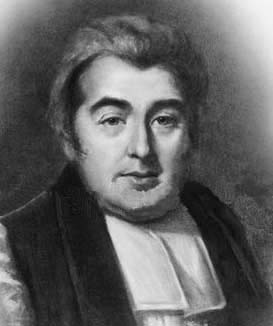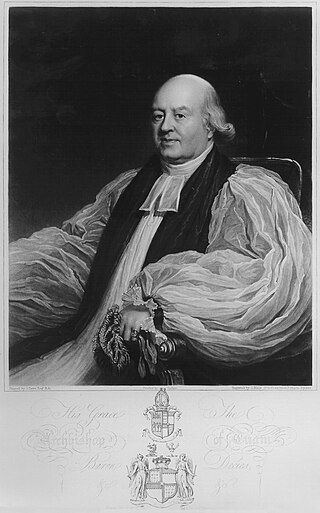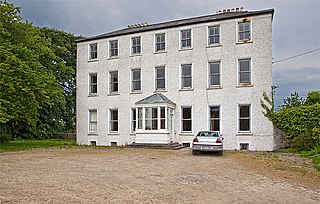
John Mortimer Brinkley was the first Royal Astronomer of Ireland and later Bishop of Cloyne. He was President of the Royal Irish Academy (1822–35), President of the Royal Astronomical Society (1831–33). He was awarded the Cunningham Medal in 1818, and the Copley Medal in 1824.

William Beresford, 1st Baron Decies was an Anglo-Irish clergyman.
Brinsley Butler, 2nd Earl of Lanesborough, PC (Ire), styled The Honourable until 1756 and Lord Newtown-Butler from 1756 to 1768, was an Irish politician and peer.

Charles Frederick D'Arcy was a Church of Ireland bishop. He was the Bishop of Clogher from 1903 to 1907 when he was translated to become Bishop of Ossory, Ferns and Leighlin before then becoming the Bishop of Down, Connor and Dromore. He was then briefly the Archbishop of Dublin and finally, from 1920 until his death, Archbishop of Armagh. He was also a theologian, author and botanist.

Colonel Thomas de Burgh, always named in his lifetime as Thomas Burgh, was an Anglo-Irish military engineer, architect, and Member of the Parliament of Ireland who served as Surveyor General of Ireland (1700–1730) and designed a number of the large public buildings of Dublin including the old Custom House (1704–6), Trinity College Library (1712–33), Dr Steevens' Hospital (1719), the Linen Hall (1722), and the Royal Barracks.
Thomas Marlay was an Irish politician and judge, who ended his career as Lord Chief Justice of Ireland. He is remembered chiefly for beginning the rebuilding of Celbridge Abbey, and as the grandfather of the statesman Henry Grattan.
Jemmett Browne was the Church of Ireland Bishop of Killaloe from 1743 to 1745, Bishop of Dromore for three months in the middle of 1745, Bishop of Cork and Ross from 1745 to 1772, Bishop of Elphin from 1772 to 1775, and finally Archbishop of Tuam from 1775 until his death in 1782.
Thomas James Welland was an Irish Anglican bishop.

James Saurin (c.1760–1842) was an Irish Anglican bishop in the 19th century. He was the last Bishop of Dromore before it was merged to the Diocese of Down and Dromore.

Richard Marlay was Dean of Ferns from 1769 to 1787; and Bishop of Clonfert and Kilmacduagh from 1787 to 1795 when he was translated to Waterford and Lismore. He died in office on 1 July 1802.

Hugh Hamilton was a mathematician, natural philosopher (scientist) and professor at Trinity College Dublin, and later a Church of Ireland bishop, Bishop of Clonfert and Kilmacduagh and then Bishop of Ossory.

John Sterne (1660–1745) was an Irish Church of Ireland clergyman, bishop of Dromore from 1713 and then bishop of Clogher from 1717.
Ralph Lambert (1667–1731) was an Irish Anglican priest in the first half of the 18th century.
Edward Young was an English Anglican priest in the eighteenth century: his senior posts were in Ireland.
Essex Digby was an English Anglican priest in Ireland in the second half of the seventeenth century.

James Leslie was an eighteenth-century Anglican bishop in Ireland.
Bartholomew Vigors (1644–1721) was an Anglican priest in Ireland in the late seventeenth and early eighteenth centuries.
Dr. Patrick Sheridan was the Church of Ireland Bishop of Cloyne between 1679 and 1682.
Eland Mossom, Esq. M.P. was a lawyer, recorder of the City of Kilkenny, and representative in the Parliament of Ireland for the Borough of St Canice in Irishtown. He was the eldest son of Dean of Kilkenny Robert Mossom. He resided at Mount Eland, near Ballyraggett.
Dive Downes was Bishop of Cork and Ross from 1699 to 1709.









